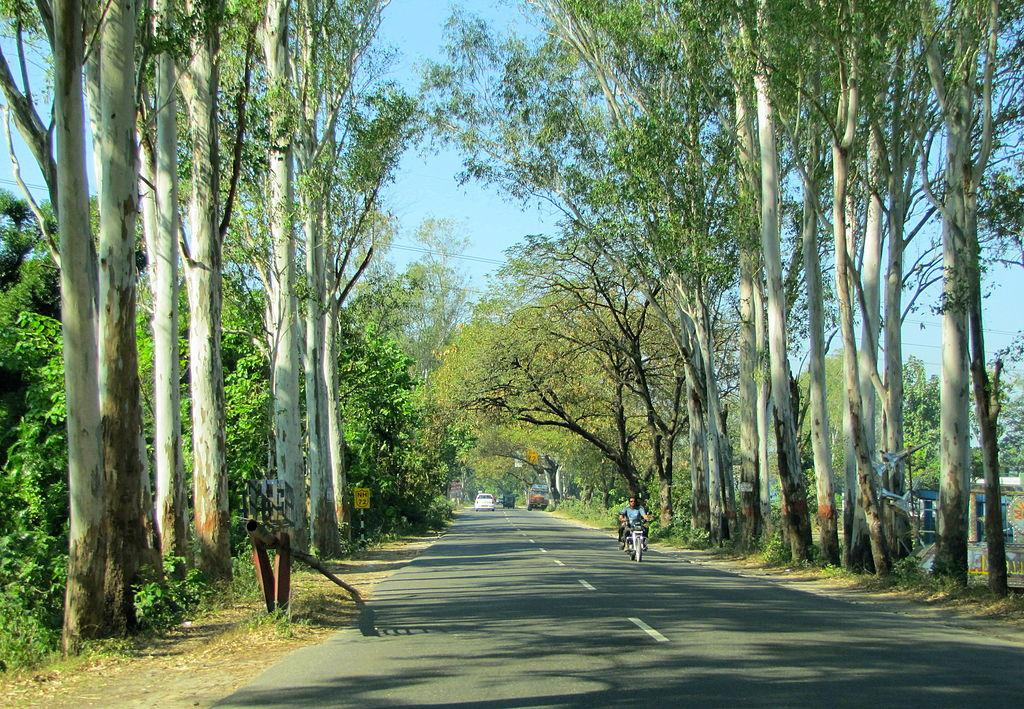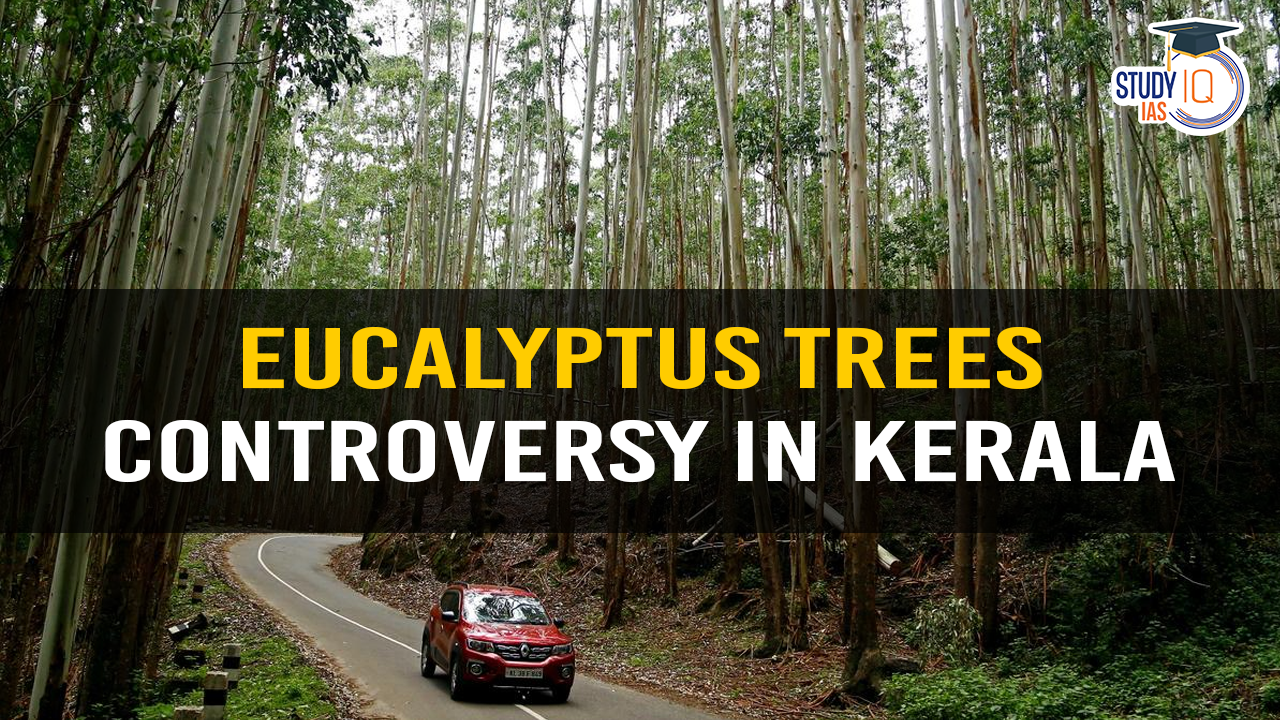Table of Contents
Context: The Kerala government’s recent order allowing the Kerala Forest Development Corporation (KFDC) to plant eucalyptus trees sparked controversy due to concerns raised by environmentalists about its potential negative impact on forests and human-animal conflict.
Kerala Forest Development Corporation (KFDC) and its Plantations
- The Kerala Forest Development Corporation (KFDC) was established on January 24, 1975, as a part of the state’s efforts towards production forestry.
- The corporation manages approximately 7,000 hectares of plantations, encompassing a variety of species:
- Eucalyptus grandis
- Acacia auriculiformis
- Acacia mangium
- Acacia crassicarpa
- Acacia pycnantha (wattle)
- Alnus nepalensis
- Casuarina equisetifolia
- Pinus patula
- Plantation cycles vary by species, with Eucalyptus having a rotation age of 9 years, Acacia auriculiformis 18 years, and Acacia mangium 7 years.
- Upon the completion of each cycle, the plantations are clear-felled and replanted with species as per an approved management plan, which also involves pre-planting soil quality checks in consultation with the Kerala Forest Research Institute.
Controversy Over Eucalyptus Plantation
- Initially, the Kerala government issued an order allowing the KFDC to plant eucalyptus trees for financial sustainability in the 2024-2025 period.
- This decision faced opposition from environmentalists, arguing that it would exacerbate forest depletion and increase human-animal conflicts, contrary to the state’s eco-restoration policy outlined in 2021.
- This policy aimed at reducing invasive species and enhancing natural habitats to decrease the prevalence of human-wildlife conflicts, notably in regions like Chinnakanal in Munnar which is a significant elephant habitat.
- After criticism, on May 20, the government revised its order to only permit the removal of exotic trees from KFDC-controlled lands, transitioning to planting indigenous species.
Eco-Restoration Efforts
- Eco-restoration involves the replacement of industrial plantations with native forests to counteract the effects of climate change and invasive species.
- Kerala plans to phase out plantations of eucalyptus, acacia, wattle, and pine by 2024.
- This initiative aligns with broader environmental goals to restore natural ecosystems and habitats.
- A practical example of eco-restoration is the project in the Marayoor Sandal Division in Idukki, supported by UNDP, NABARD, and the Compensatory Afforestation Fund Management and Planning Authority.
- This project involved the removal of 108 hectares of exotic species, which led to the revival of natural grasslands and the restoration of water streams after a thirty-year gap.
About Eucalyptus Tree
- Origin: Native to Australia, with some species extending to Indonesia and Papua New Guinea.
- Global Spread: Widely cultivated globally, especially in tropical and temperate climates.

Botanical Characteristics
- Genus: Eucalyptus; over 700 species within the genus.
- Height: Can grow up to 30 to 180 feet tall, depending on the species.
- Leaves: Generally long, narrow, and hang downwards to avoid direct sunlight and reduce water loss.
- Bark: Often peels annually and varies from smooth to fibrous.
Economic Uses
- Pulp and Paper Industry: Wood is a primary source for pulp production due to its fast growth and high cellulose content.
- Oil: Eucalyptus oil, extracted from the leaves, is used for medicinal purposes, including cough suppressants, antiseptics, and in aromatherapy.
- Timber: Used for construction, furniture, and as firewood due to its durability and strength.
- Agroforestry: Widely used in farm forestry programs to bolster rural economies and provide raw materials for various industries.
Environmental Impacts
Positive Impacts
- Carbon Sequestration: Effective in absorbing carbon dioxide and can contribute to climate change mitigation.
- Reforestation: Used in reforestation projects due to its rapid growth and adaptability.
Negative Impacts
- Water Consumption: Eucalyptus trees are known for their high water usage, which can lower groundwater levels and dry out soils, especially in arid regions.
- Soil Quality: They can lead to soil nutrient depletion, making it less fertile for other plant species.
- Biodiversity: The monoculture of eucalyptus plantations can reduce biodiversity, as they often replace diverse native forests1.
- Allelopathy: Eucalyptus leaves contain chemicals that can inhibit the growth of other plants, impacting the undergrowth and plant diversity in the area.
- Stream Ecosystems: Studies have shown that eucalyptus plantations can affect stream ecosystems by inhibiting leaf litter decomposition, which is crucial for nutrient cycling.


 Hydrogen For Net-Zero Economy, Governmen...
Hydrogen For Net-Zero Economy, Governmen...
 Mantis Shrimp - Latest Research News and...
Mantis Shrimp - Latest Research News and...
 Places in News for UPSC 2025 for Prelims...
Places in News for UPSC 2025 for Prelims...





















